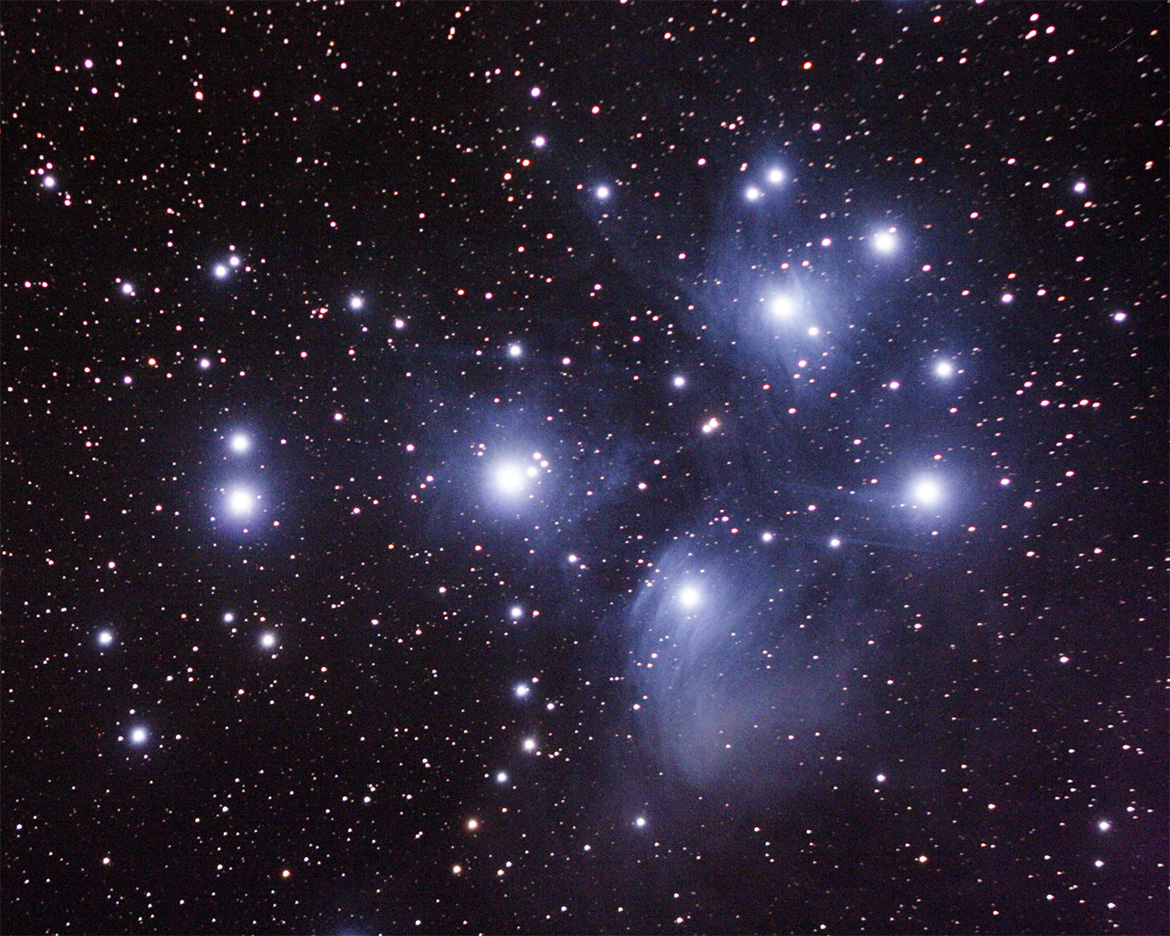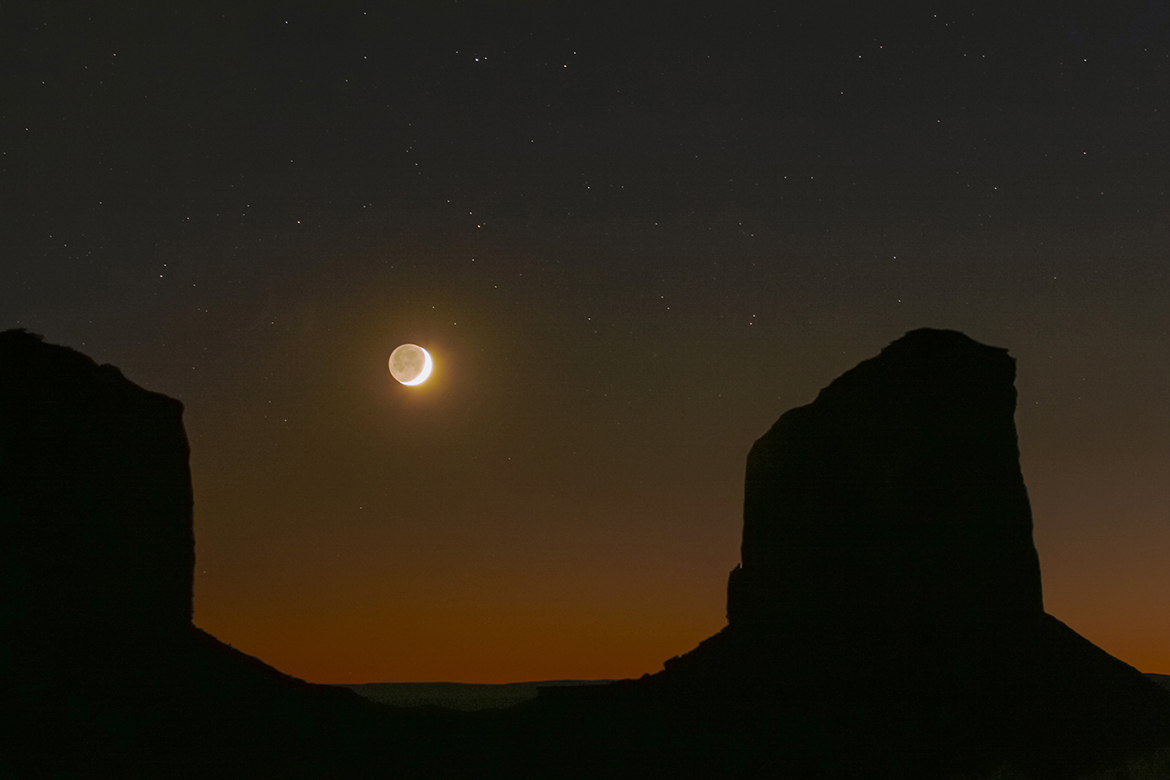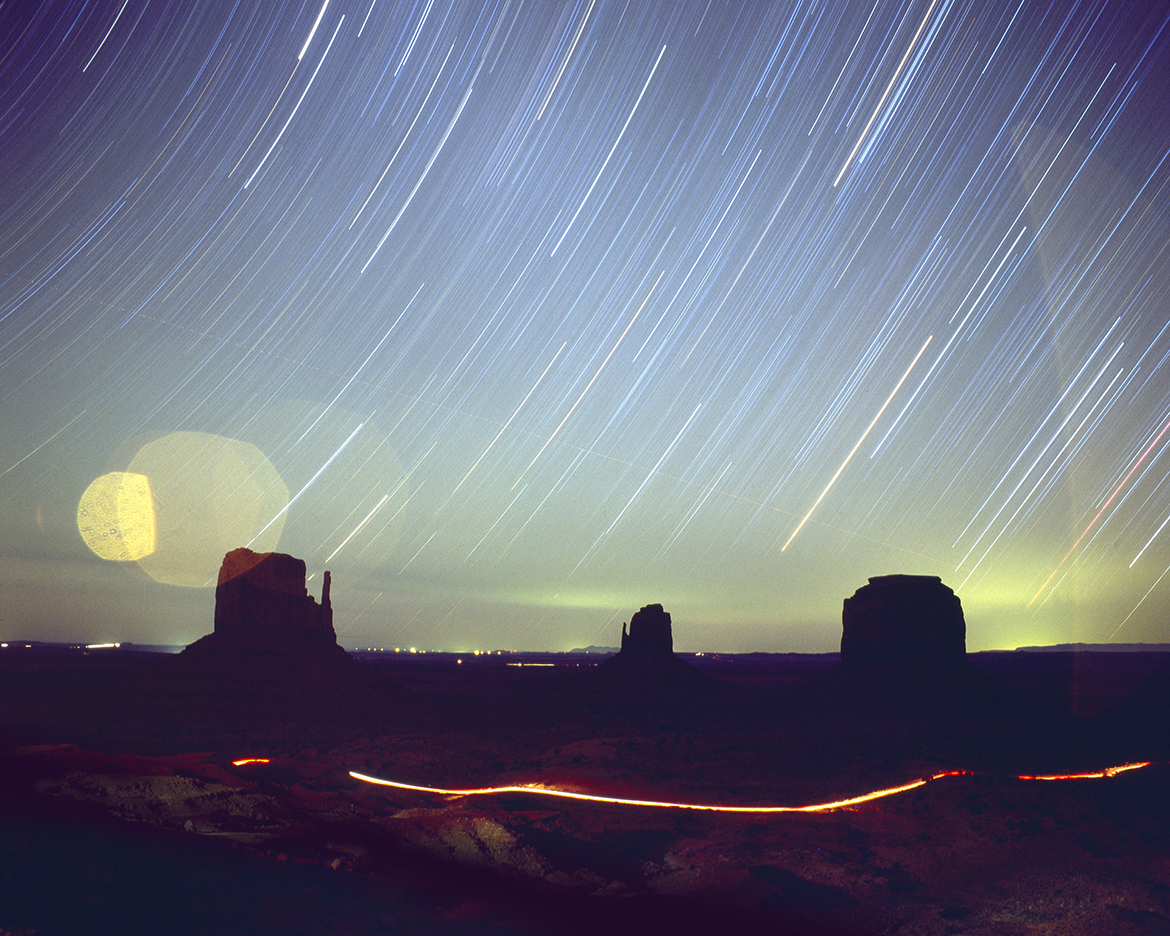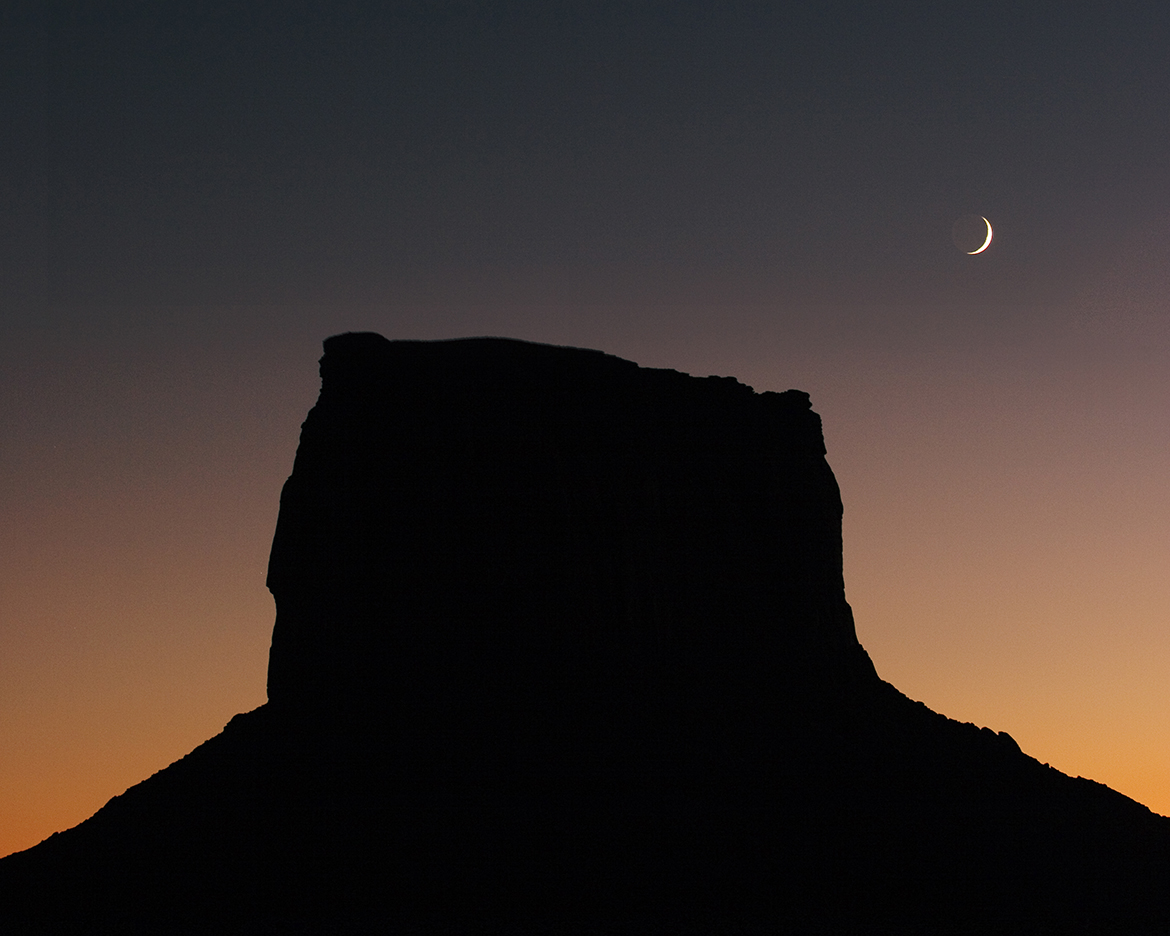
Also known as the “Seven Sisters”, the wispy blue glow is from dust reflecting the light of these nearby stars.
Monument Valley, Navaho Nation
5 November 2005
Televue 85 f/5.6
Canon EOS 20Da
previous | nightscapes index | next


Also known as the “Seven Sisters”, the wispy blue glow is from dust reflecting the light of these nearby stars.
Monument Valley, Navaho Nation
5 November 2005
Televue 85 f/5.6
Canon EOS 20Da
previous | nightscapes index | next

An early experiment in using different exposures to build a high dynamic range (HDR) image of the Orion Nebula. The “Running Man” nebula is revealed to its upper left.
Monument Valley, Navaho Nation
5 November 2005
Televue 85 f/5.6
Canon EOS 20Da
previous | nightscapes index | next

There is enough earthshine to illuminate the night side of the moon.
Monument Valley, Navaho Nation
4 November 2005
Canon EOS 20Da
previous | nightscapes index | next

A 90-minute exposure captures a variety of lights. The stars mark their clockwork passage across the sky of course, but civilization also leaves its mark. Airplane beacons flash as they pass through, distant towns show on the horizon, and local traffic finds its way along the private road below. Private, but not unseen, and when the headlights aim in my direction, with the lens wide open, the film captures their flare.
Monument Valley, Navaho Nation
4 November 2005
Pentax 6×7, 55mm f/3.5, 90 minutes
Kodak E200 +1 stop push
previous | nightscapes index | next

A day later the crescent moon accompanies the ancient monument.
Monument Valley, Navaho Nation
4 November 2005
Canon EOS 20Da
previous | nightscapes index | next

A beautiful composition where a very young moon, maybe less than a day old, following a short distance behind the setting sun, accents the sky.
Monument Valley, Navaho Nation
3 November 2005
Canon EOS 20Da
previous | nightscapes index | next

As the sun sets in the west, the view to the east shows a distinct purplish band at the horizon. This is the Earth’s shadow on the sky, a forecast of the twilight to come.
Monument Valley, Navaho Nation
3 November 2005
Canon EOS 20Da
previous | nightscapes index | next

The sun has just set and the remaining colors cast a warm glow on the “North Mitten”. The sky behind it shows the shadow of the Earth on the sky just above the horizon.
Monument Valley, Navaho Nation
3 November 2005
Canon EOS 20Da
previous | nightscapes index | next
I have used this blog as a vehicle to “pre-publish” the pages for what I call “Coffee Table Nightscapes”. I’ve been reviewing the night sky pictures and astrophotos that I have taken over the last few decades, selecting my favorites, annotating them, and preparing them to be published as a photo book. They begin with pictures of comet Hale-Bopp in 1997, include many from my Nightscape Odyssey taken in 2001, and I had worked my way up through the 2004 pictures from Yosemite.
I will now pick up from there by posting pictures of Monument Valley during a trip to Arizona in 2005. The full story of obtaining these photos has already been presented in earlier blog entries. Here is a portrait of the distinctive landscape at sunset, one I have included among the banner images on this site.

Utah, northwest of Monument Valley
2 November 2005
Canon EOS 20Da
previous | nightscapes index | next
1968 was a big year for me. I turned 15 and I went on a date, my first, with a girl who would later–45 years later, become my late-life partner and constant companion, road trips included. But that is another story. Earlier in that big year I experienced my very first road trip adventure.
My uncle Bob had completed his medical school training and had been accepted for the next stage on his path towards becoming a practicing physician: an internship at Oakland Medical Center. In 1968, Oakland California was a long way from Minneapolis Minnesota. Yes, an expensive plane ride could get you there in three hours, but if you needed to bring more than a weight-limited suitcase, a three-day overland drive was required.
And Bob was fully ready for it, having recently acquired a 1968 model year Ford Mustang convertible, into which he packed the possessions that would support him for the next year in a remote setting. The car was symbolic, a vehicle to take him to that next phase of his career. It was freeing. With the top down, the wind in his hair evoked that sense of traveling to far off destinations holding unknown new experiences. It was a big year for him too.
Continue reading